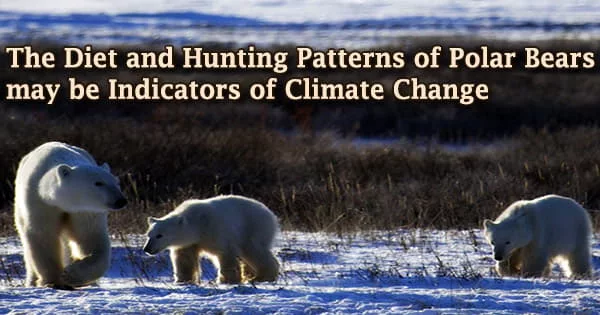How are polar bears and their marine animal prey in the Arctic being affected by rising temperatures and the loss of sea ice? A study team lead by York University took a fresh approach to the subject by tracking what polar bears consume and where they find their food across Nunavut.
They discovered that polar bears may be used as environmental indicators, highlighting how these changes are disrupting the typical distribution of marine mammal prey populations in the Arctic.
Ursus maritimus, the polar bear’s Latin name, meaning “sea bear.” It’s a fitting moniker for this magnificent creature, which spends much of its existence in, near, or on the ocean–most notably on sea ice. Alaska is home to two polar bear subpopulations in the United States.
Polar bears need the sea ice to hunt. When there is a reduction in the sea ice, they’re hunting less or they’re potentially hunting different prey species.
Melissa Galicia
The researchers discovered that polar bears, who were previously considered to only consume ringed and bearded seals, are really versatile feeders, according to Ph.D. Candidate Melissa Galicia of the Faculty of Science and Professor Gregory Thiemann of the Faculty of Environmental and Urban Change. They consume whatever is nearby, which makes them perfect as a monitoring tool for environmental changes in the Arctic.
“Polar bears need the sea ice to hunt. When there is a reduction in the sea ice, they’re hunting less or they’re potentially hunting different prey species,” says Galicia.
“Prey species, such as whales and seals, require certain ecological conditions, and some marine animals, such as bear prey species, are dispersing as a result of environmental changes in the Arctic. You’re getting an increase in more sub-Arctic species, like killer whales for instance.”

Polar bears use sea ice for a variety of purposes, including mobility, hunting, resting, mating, and, in certain cases, maternity dens. However, due of the current and possible loss of their sea ice habitat as a consequence of climate change, polar bears were designated as an endangered species in the United States under the Endangered Species Act in May 2008.
Polar bears are spending extended amounts of time on land as their sea ice habitat recedes sooner in the spring and develops later in the fall, and they are often drawn to locations where humans live.
The researchers evaluated polar bear harvest samples from around Nunavut, which were submitted by subsistence hunters over an eight-year period, to identify spatial hot zones of prey species. According to the findings, polar bear nutrition may give early signs of changes in mammalian distribution owing to climate change.
“I’m getting a large geographic representation of bears, especially in areas that tend to be less studied,” says Galicia, who was able to analyze the fatty acids, such as omega 3s and omega 6s, in the fat tissue of bears.
“Each bear will have a unique fatty acid signature, similar to a fingerprint, which will allow you to know what that specific bear is eating and what proportion of their diet that represents.”
Bowhead whale corpses were becoming more prevalent in polar bear diets, which they believe might be connected to killer whales traveling further north and remaining for longer periods of time.
Changes brought on by a rising climate, according to the researchers, would certainly compel extensive species redistribution, particularly in polar regions. The Arctic ecosystem is undergoing global warming up to three times faster than any other location. Although polar bears in Nunavut are not suffering climate change to the same extent as certain subpopulations in western Hudson Bay and the Beaufort Sea, this is expected to alter in the future.
“As temperatures across the Arctic warm and sea ice loss increases, there will be profound cascading ecological consequences. What’s not known is how that will affect species, such as seals and whales, but by monitoring the seasonal prey consumption of polar bears, scientists can better keep track of where marine mammal prey species are showing up and their seasonal distribution,” says Thiemann.
The report claims that because the Arctic ecosystem is warming three times faster than any other place, the effects would “demand extensive species redistribution,” particularly in polar habitats. Polar bears in Nunavut aren’t suffering climate change to the same extent as polar bear populations in the western Hudson’s Bay and Beaufort sea areas, but that is expected to change in the future, according to experts.
Because there is presently little information on the population and distribution of marine mammals in the Arctic, this research provides an opportunity to learn more and identify prospective range changes. Future studies of polar bear diets should include prey species not generally present in the region, according to the researchers, in order to better forecast the severity and impact of climate change.
















